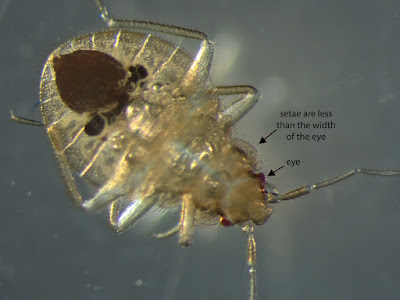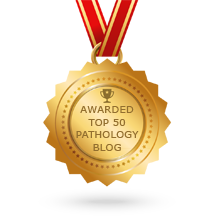Answer to the Parasite Case of the Week 737: Pentatrichomonas hominis trophozoites.
P. hominis trophozoites have 5 flagella: 4 are directed anteriorly, while the 5th is directed posteriorly, forming the outer edge of an undulating membrane. This results in characteristic motility that Richard likes to describe as "a man trapped inside a plastic bag" (!) I managed to capture a couple of still images from the video which show this phenomenon:






.jpg)
.jpg)
.jpg)

.jpg)
.jpg)
.jpg)
.jpg)


